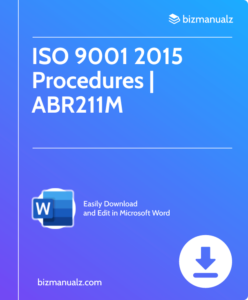New Climate Change Language Added to ISO 9001:2015

What actions should organizations take to address the additions to ISO 9001:2015 requirement about climate change. Specifically, text has been added to clause 4.1 : “The organization shall determine whether climate change is a relevant issue.” and to clause 4.2 a note has been added: “NOTE: Relevant interested parties can have requirements related to climate change.” This means there is a new meaning to how you perform environmental scanning as a result of New Climate Change Language Added to ISO 9001:2015.
ISO 9001 Climate Change Requirement
There is a new ISO addition to the current ISO 9001:2015 requirements that is effective immediately. This new requirement relates to climate change. Organizations now need to determine if climate change is a relevant issue (as per clause 4.1), when are you looking at internal and external issues.
The rationale behind the new requirements related to climate change in ISO 9001:2015 can be understood in the context of increasing recognition of environmental sustainability as a critical aspect of business operations.
Benefits of Addressing Climate Change
Climate change poses significant environmental challenges, including extreme weather events, rising temperatures, sea-level rise, intense seasonality, and ecosystem disruptions. These impacts have far-reaching consequences for businesses, communities, and the global economy.
Many countries have introduced or are considering legislation aimed at mitigating climate change and reducing greenhouse gas emissions. Compliance with environmental regulations is essential for businesses to avoid legal penalties and maintain their social license to operate.
Stakeholders, including customers, investors, employees, and communities, increasingly expect organizations to demonstrate their commitment to environmental responsibility. Addressing climate change is becoming a key consideration for stakeholders when evaluating the credibility and sustainability of businesses.
Climate change presents various risks to businesses, such as supply chain disruptions, resource scarcity, reputational damage, and financial losses. Assessing and addressing these risks proactively can help organizations enhance their resilience and long-term viability.
Addressing climate change can also create opportunities for innovation, cost savings, and competitive advantage. Businesses that embrace sustainability initiatives can attract environmentally conscious customers, access new markets, and enhance their brand reputation.
Actions to Address ISO Climate Change Requirement
To address the additions to ISO 9001:2015 regarding climate change, organizations should take the following actions:
- Determine Relevance: Organizations should assess whether climate change is a relevant issue for their operations, products, and services. This involves evaluating the potential impacts of climate change on their business processes, supply chain, stakeholders, and the broader environment.
- Identify Interested Parties: Organizations should identify relevant interested parties, including customers, suppliers, regulatory bodies, and community stakeholders, who may have requirements related to climate change. Understanding the expectations and needs of these parties regarding climate change is crucial for aligning business practices accordingly.
- Integration into Quality Management System (QMS): Climate change considerations should be integrated into the organization’s quality management system (QMS). This may involve updating policies, procedures, and objectives to reflect a commitment to environmental sustainability and climate resilience.
- Risk Assessment and Mitigation: Organizations should conduct risk assessments to identify potential risks and opportunities associated with climate change. This includes assessing risks such as extreme weather events, supply chain disruptions, regulatory changes, and reputational damage. Mitigation strategies should be developed to address identified risks and capitalize on opportunities.
- Stakeholder Engagement: Engage with relevant stakeholders to gather insights, address concerns, and collaborate on climate-related initiatives. This may involve forming partnerships with environmental organizations, participating in industry forums, and consulting with affected communities.
- Training and Awareness: Provide training and awareness programs for employees to enhance their understanding of climate change issues and their role in mitigating environmental impacts. This may include education on energy efficiency, waste reduction, sustainable practices, and compliance with environmental regulations.
- Monitoring and Measurement: Establish systems for monitoring and measuring climate-related key performance indicators (KPI) to track progress over time. This may include tracking greenhouse gas emissions, energy consumption, waste generation, and water usage. Regular performance evaluations will help identify areas for improvement and ensure compliance with climate-related objectives.
- Continuous Improvement: Implement a culture of continuous improvement to drive ongoing efforts to address climate change. This involves regularly reviewing and updating strategies, objectives, and action plans in response to changing environmental conditions, stakeholder expectations, and regulatory requirements.
Impact on ISO Registration and Surveillance Audits
Certification bodies (CB) are expected to make sure the organization has taken climate change into account and, if it is found to be a pertinent issue for its quality management system, has included climate change into all of its goals and mitigation efforts as needed. The CB is expected to verify the effectiveness of the organization’s method for reaching this conclusion and, if necessary, to carry out related actions, in the event that the organization determined it was not a pertinent issue for its management system.
Climate Change in ISO 9001 Standard
There has been some discussion around whether this change is appropriate to ISO 9001 instead of the environmental standard ISO 14001. It has been reported that it will be integrated into many different standards over time. Either way, this is something that now has to be integrated into your Quality Management Systems and the audit process.
Integrating climate change considerations into the ISO 9001 quality management system means organizations can effectively manage environmental risks, meet stakeholder expectations, comply with regulations, and capitalize on emerging opportunities for sustainable growth. By taking these proactive steps, organizations can effectively address the additions to ISO 9001:2015 regarding climate change and demonstrate their commitment to environmental sustainability and responsible business practices.
















Leave a Reply